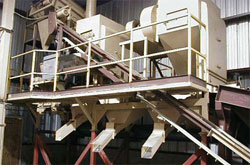Expanding Farms' Roles to Increase Profit
Technology is one way to boost profits. Changing the way farmers do business is another. Russell Lester is an organic walnut farmer near Davis, California. Like farmers everywhere, Lester is upset that the products he grows are such a small part of the price of food. For instance, corn accounts for only a fraction of the price of a box of cornflakes. The same is true for wheat in wheat bread.
"I think the biggest threat to the family farm is the idea that we need cheaper and cheaper food," Lester says. "Since I graduated from college some 20 years ago, it was at that time 17 percent to 18 percent of a person's consumable income went to food. Now it is around nine percent and that includes fast food, prepared, and everything ... so more money is going to the processing costs and cooking instead of the farmer."
To bolster their profit margins, many farmers are moving up the nation's food chain. Lester is "vertically integrated": He owns a processing plant on his farm where the walnuts are shelled, boxed, and shipped to stores.
 |    |  |
 |
 |
 |
 |  |  |
 |
Russell Lester's walnut processor. Click photo to enlarge
Photo: Chris Farrell |
 |
 |    |  |
He shows us the processor, a metal and wood contraption of pulleys and conveyer belts that takes up most of one wall in a warehouse. "The sheller head is what cracks the shell off the walnut, and if everything is adjusted right," he says, "we are not doing too much damage to the meat."
Lester farms 240 acres, and he buys an additional 200 acres of walnuts from growers. He will process nearly two million pounds of walnuts this year.
"We sell our walnuts around the world," he says, "and it makes me satisfied when I go to Maine or southern California and see somebody enjoying my walnuts."
He also gets to pocket more of the profit. "Being vertically integrated gives us more of a potential for a profit, [not] being at the whims of another processor," he says. "If you're making more one year on processing than on the growing, we still absorb that income in ... whereas if we were just growing alone, would be at the mercy of whoever is offering us the best price."
Indeed, Lester isn't much of a farmer these days. He's mostly an office-bound small business entrepreneur with a hired manager that runs the farm and its seven year-round employees.
"I have to deal with people to collect bills—to collect money," he says. "You have to hire more individuals to do the work in the processing plant, and we have a lot more investment in the equipment, and there is always the risk of not being able to see your crop and not getting paid by somebody."

